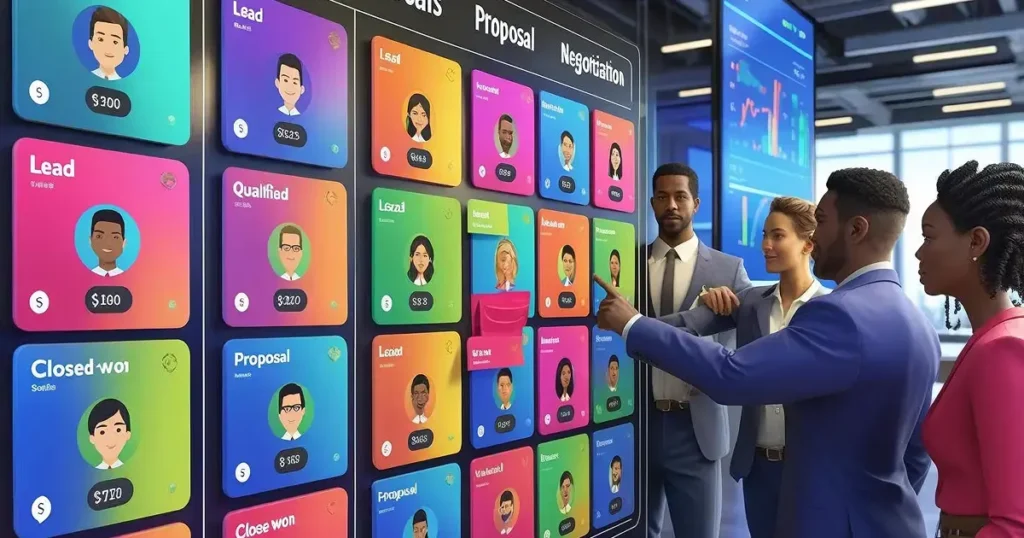Now Reading: Navigating the Future: Latest Business Trends and Innovations in 2025
-
01
Navigating the Future: Latest Business Trends and Innovations in 2025

Navigating the Future: Latest Business Trends and Innovations in 2025
Introduction to Business Innovations in 2025
As we move into 2025, the global business landscape is undergoing significant transformations, driven by rapid technological advancements and evolving consumer behaviors. Businesses are increasingly leveraging innovative solutions to respond to challenges and seize opportunities. The convergence of technology, creativity, and new operational models is reshaping how organizations operate, interact with customers, and deliver value. Understanding these trends is essential for navigating the competitive terrain of today’s market.
Amidst a backdrop of economic volatility, businesses are now prioritizing adaptability and resilience. The aftermath of the pandemic has prompted a shift towards more flexible business practices that enable quick responses to market changes. Organizations are focusing on digital transformation, embracing technologies such as artificial intelligence, machine learning, and cloud computing to streamline operations and improve decision-making processes. This integration of technology not only enhances efficiency but also enables businesses to better meet the expectations of their tech-savvy customers.
Consumer behavior is also undergoing a profound change. Increased awareness of sustainability and corporate responsibility is influencing purchasing decisions, driving businesses to innovate their products and services accordingly. The rise of remote work has altered the way consumers engage with businesses, prompting the emergence of personalized and omnichannel experiences. Consequently, organizations are rethinking their customer engagement strategies, employing data analytics to tailor their offerings to individual preferences and needs.
In this evolving landscape, it is crucial for businesses to keep pace with these innovations and trends. The innovations emerging in 2025 will not only define competitive advantage but will also shape the future of industries. This blog post will explore the latest trends and technologies, providing insights into how businesses can strategically position themselves to thrive amidst these changes.

Emerging Technologies: The Game Changers
As we progress into 2025, the business landscape is witnessing the emergence and rapid evolution of several transformative technologies that are fundamentally changing how industries operate. Key among these technological advancements are artificial intelligence (AI), blockchain, and the Internet of Things (IoT). These innovations are not merely trends; they are catalysts for redefined operational efficiency, enhanced customer experiences, and sophisticated data analytics.
Artificial intelligence continues to lead the charge in the technological evolution of businesses. With its capabilities in machine learning and natural language processing, AI empowers organizations to automate repetitive tasks, analyze vast datasets, and offer personalized services at unprecedented scales. Businesses are utilizing AI to optimize supply chains, predict consumer behavior, and enhance decision-making processes. The impact of AI is felt across various sectors, including finance, healthcare, and retail, where it is employed to improve operational efficiency and drive growth.
Blockchain technology is another significant player in shaping the business environment of 2025. It offers a decentralized and secure method for recording transactions, which reduces fraud and increases transparency. Organizations are integrating blockchain to streamline their processes, especially in supply chain management, where it helps in tracking products from origin to destination. The reliability and security of blockchain are instrumental in building trust among stakeholders, further enhancing customer relationships and efficiencies.
Moreover, the Internet of Things is revolutionizing the way businesses connect with their customers and manage their resources. By utilizing connected devices and sensors, companies can gather real-time data and insights about their operations, leading to better resource management and improved customer engagement. IoT applications range from smart inventory management systems to enhanced customer service platforms that allow for real-time interactions.
In essence, these emerging technologies are not just shaping the future; they are redefining it. Their integration into business operations is set not only to improve efficiency and innovation but also to create responsive environments that cater to the evolving expectations of consumers.
Sustainable Business Practices: A Necessity, Not an Option
As global awareness of environmental issues continues to grow, it has become increasingly evident that sustainable business practices are no longer just an option for companies but a necessity. In 2025, the integration of eco-friendly operations stands as a critical component in the strategic planning of modern businesses. Organizations are not only responding to consumer demand for greener solutions but are also recognizing the long-term benefits associated with sustainable development.
Corporations are gravitating towards the adoption of renewable energy sources as a primary means of reducing their carbon footprint. Solar, wind, and geothermal energy implementations have become common, significantly lowering operational costs while demonstrating a commitment to environmental stewardship. For instance, major corporations like Google and Apple are investing heavily in fully renewable energy operations, effectively positioning themselves as leaders in the industry.
Sustainable supply chains also play a pivotal role in shaping business models for the future. Companies are increasingly focusing on sourcing materials responsibly, reducing waste, and ensuring ethical labor practices throughout their operational networks. By establishing partnerships with suppliers who prioritize sustainability, businesses can enhance their reputation while contributing to a more resilient economy. Walmart, for instance, has made considerable strides by encouraging suppliers to adopt eco-friendly practices, which has resulted in enhanced efficiencies and cost reductions across their supply chain.
Case studies of successful enterprises reveal distinct advantages associated with prioritizing sustainability. Companies that adopt green initiatives often experience improved customer loyalty, enhanced brand recognition, and increased market share. Sustainable practices are no longer viewed merely as a cost, but as a catalyst for innovation and a strategic asset that can drive profitability. Thus, as we move deeper into 2025, organizations that embrace sustainability will undoubtedly find themselves at the forefront of both consumer preference and competitive advantage in the ever-evolving landscape of business. In conclusion, the imperative for businesses to adopt sustainable practices is clear, underscoring the transition towards a more eco-conscious marketplace.
Remote Work Evolution and the Future of Employment
The shift towards remote work has been a significant trend in recent years, gaining momentum especially during and after the global pandemic. By 2025, this trend has evolved into more sophisticated hybrid work models that combine in-office and remote work. These models are being adopted by a growing number of organizations to accommodate the diverse preferences of their workforce while maintaining productivity and engagement. As companies navigate this new landscape, the emphasis is placed on flexibility, allowing employees to choose where and how they work.
One of the pivotal aspects of this evolution is the enhancement of employee well-being. Organizations are increasingly recognizing that remote work can lead to both positive and negative effects on mental health and work-life balance. In 2025, we see a surge in initiatives aimed at promoting mental health resources, fostering social connections among remote teams, and providing support for flexible working hours. The integration of wellness-focused practices not only aids in employee satisfaction but also strengthens the overall corporate culture, making it more inclusive and adaptable to the needs of a hybrid workforce.
Technology plays a critical role in facilitating effective remote collaboration. Advancements in communication tools, project management software, and virtual collaboration platforms are making it easier for teams to remain connected regardless of their physical locations. This technological support is essential for maintaining productivity, ensuring that workflow remains uninterrupted, and promoting innovation within teams. Moreover, organizations are harnessing data analytics to monitor engagement levels and team dynamics, which enables them to fine-tune their remote work strategies effectively.
As businesses adapt to these trends, the implications for company culture are profound. A remote-friendly culture encourages trust, autonomy, and transparent communication. By refocusing on the human aspect of work, organizations stand to benefit from enhanced employee loyalty and higher retention rates. Overall, the evolution of remote work is reshaping employment dynamics in numerous ways, positioning organizations for success in the future.
Consumer Behavior Trends Driving Business Ideas
As we move into 2025, significant shifts in consumer behavior are becoming apparent, fundamentally influencing business strategies across various sectors. One of the standout trends is the rise of conscious consumerism, where individuals are increasingly aware of the ethical, social, and environmental impacts of their purchase decisions. This trend demands that businesses not only offer quality products but also showcase transparency regarding sourcing, production methods, and supply chain practices. Brands that connect with consumers on these values are likely to foster loyalty and engagement.
Another prominent factor reshaping consumer behavior is the shifting purchase drivers. In this digital age, consumers are no longer just motivated by price and convenience; they seek personalized experiences and enhanced customer service as paramount considerations. Social media platforms have amplified this shift by facilitating direct interactions between brands and consumers, allowing for rapid feedback and customization of offerings. Businesses that leverage data analytics to understand and anticipate customer preferences will be better positioned to drive sales and maintain competitive advantages in their markets.
Moreover, trends in online shopping are evolving as technology integrates with consumer habits. The continued proliferation of mobile shopping and augmented reality experiences contributes to a more immersive retail environment both online and offline. Brands that invest in digital tools allowing seamless navigation and enhanced user experiences are likely to attract a wider customer base. Alongside this, businesses must consider the increasing importance of sustainability in product offerings. Many consumers now prefer brands that commit to environmentally friendly practices, further illuminating the necessity for businesses to innovate and align their products with these values.
Ultimately, as consumer preferences continue to evolve in 2025, companies that adapt their strategies to embrace conscious consumerism, personalize the shopping experience, and prioritize sustainability will thrive in an increasingly competitive landscape.
Global Market Dynamics: Opportunities and Challenges
The year 2025 promises to be a transformative period for global market dynamics, marked by a myriad of opportunities and challenges that businesses will need to navigate effectively. A significant economic trend shaping this landscape is the shift towards digital transformation, which has accelerated in recent years. Companies are increasingly required to adapt to new technologies that enhance operational efficiency, improve customer engagement, and optimize their supply chains. With the rise of artificial intelligence and big data analytics, businesses are positioned to harness insights that drive innovation and create competitive advantages.
In the context of cross-border trade, the integration of new trade agreements and the reduction of tariffs present unique opportunities for businesses to expand their market reach. Global trade organizations are emphasizing collaboration, allowing firms to access emerging markets that were previously untapped. This creates a robust platform for businesses seeking to diversify their operations internationally. However, it is essential for organizations to remain vigilant and informed about the evolving regulatory environments in these territories.
Geopolitical challenges, such as trade tensions, economic sanctions, and shifting political landscapes, are also significant factors influencing global market dynamics in 2025. These elements can disrupt supply chains, alter consumer behavior, and impose unforeseen risks on business operations. Companies must engage in proactive risk management strategies, such as diversifying suppliers and adopting agile business models, to mitigate potential disruptions. Cultivating a strong understanding of the geopolitical climate will be crucial for companies to sense opportunities quickly and address challenges effectively.
Ultimately, by leveraging technology, embracing international collaboration, and strategically managing risks, businesses can navigate the complexities of the global market in 2025 and seize emerging opportunities for growth.
Innovative Business Models: Adapting to Change
As we progress into 2025, businesses are increasingly embracing innovative models to remain competitive in an ever-evolving market. Among these emerging business strategies, subscription services, pay-per-use models, and platform-based businesses have gained significant traction. Each of these approaches offers distinct advantages and challenges that organizations must navigate to capitalize on their potential.
Subscription services have transformed how consumers access products and services, providing continuous revenue streams for businesses. This model allows businesses to build lasting relationships with customers by fostering loyalty through regular, predictable interactions. Companies such as Netflix and Spotify exemplify this trend, where consumers receive ongoing value in exchange for a monthly fee. However, this model necessitates a commitment to consistently improving user experience and content offerings to minimize churn rates, which can emerge as a potential drawback.
Another innovative business model gaining popularity is the pay-per-use approach. This model charges consumers for the specific amount of a product or service they consume, rather than a flat fee. Industries such as transportation and software as a service (SaaS) are increasingly adopting this flexibility, allowing customers to pay only for what they need. While this can enhance customer satisfaction, it poses challenges for businesses in terms of forecasting revenue and managing resource allocation effectively.
Lastly, platform-based businesses, characterized by their role as intermediaries connecting various stakeholders, have been pivotal in reshaping industry landscapes. Platforms like Airbnb and Uber have created ecosystems where users can interact, transact, and share resources. This model fosters innovation and allows businesses to tap into vast networks, but it also entails navigating regulatory concerns and maintaining platform integrity. As organizations continue to explore these innovative business models, they must remain agile, embracing change while addressing the intricacies of the business landscape.
Investment Trends to Watch in 2025
As we approach 2025, several noteworthy investment trends are beginning to emerge, shaping the landscape for both venture capitalists and individual investors alike. One of the most significant trends is the pronounced shift towards sectors that prioritize sustainability and innovation. Sectors such as renewable energy, electric vehicles, and technology-driven agricultural solutions are attracting heightened interest from investors who are eager to capitalize on the growing demand for sustainable practices. This shift is not merely a trend but a reflection of the increasing awareness among investors regarding environmental, social, and governance (ESG) criteria.
Furthermore, the rise of impact investing continues to gain momentum. Investors are increasingly looking to allocate capital into businesses that provide measurable social and environmental benefits alongside financial returns. This approach has prompted a broader examination of how companies can contribute to societal welfare while still achieving profitability. In 2025, expectation is that funds devoted to impact investments will witness robust growth, as both institutional and individual investors seek to align their portfolios with their personal values.
In the realm of stock markets, volatility remains a central theme due to fluctuating economic conditions. Investors are anticipated to adopt more cautious strategies, focusing on blue-chip stocks and established companies with solid balance sheets. This approach may lead them to favor sectors resilient to economic downturns, such as healthcare and consumer staples, over more speculative investments. Furthermore, technological advancements are also playing a crucial role; investors increasingly rely on data analytics and AI-driven platforms to evaluate market trends and forecast investment opportunities accurately.
With these dynamics shaping the investment landscape, it is essential for investors to stay informed and adaptable. As new trends emerge and evolve, understanding the implications of these shifts will be critical to making sound investment decisions in the competitive market of 2025.
Conclusion: Preparing for the Business Landscape of Tomorrow
As we look towards the advancements that 2025 holds, it is imperative for businesses to remain agile and innovative. Throughout this blog post, we have explored a myriad of trends and innovations that are shaping the future of commerce and organizational strategies. Key themes such as technological integration, sustainability, and the evolution of consumer behavior are becoming increasingly pronounced. Businesses that proactively embrace these changes will be better positioned to dynamically respond to challenges and seize forthcoming opportunities.
The significance of agility cannot be overstated. Companies should foster a culture that embraces continual learning and adaptation, allowing for a smoother transition into the changing economic landscape. The ability to pivot and modify business strategies in response to emerging trends and consumer demands will be a critical factor in determining long-term success. This is particularly relevant as businesses navigate the complexities introduced by technological advancements and the imperative for environmental stewardship.
Moreover, innovation plays a vital role in ensuring sustained competitive advantage. Embracing emerging technologies, such as artificial intelligence and automation, can dramatically enhance operational efficiency while providing a platform for better-targeted consumer engagement. Such innovations not only streamline processes but also offer insights into customer preferences, enabling businesses to tailor their offerings more effectively.
In preparation for the future, organizations must remain vigilant and open to change. This includes actively monitoring industry trends, investing in research and development, and nurturing collaborative environments that spur creativity. As each company contemplates its vision for the future, staying informed and adaptable will prove fundamental in thriving within the business landscape of 2025 and beyond.






















